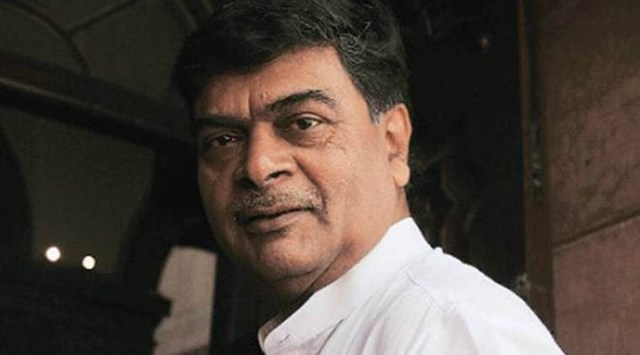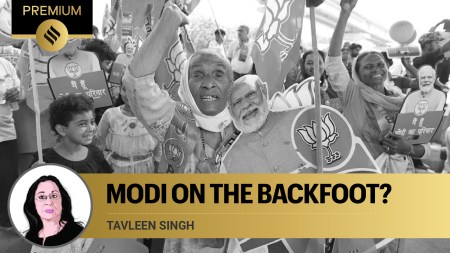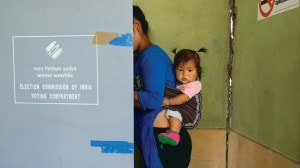- India
- International
Coal shortage beyond usual, situation touch and go: Power Minister RK Singh
While there is expectation that the demand could start tapering off from the latter half of October, Union Power Minister R K Singh said the bridging of the fuel gap is still likely to be a “touch and go” affair and that he is bracing for a trying “next five-six months”.
 Union Power Minister R K Singh. (File)
Union Power Minister R K Singh. (File)As the economy recovers from pandemic blows, a sharp surge in energy demand has triggered an unprecedented fuel shortage at the country’s coal-fired stations, a situation that Union Power Minister R K Singh terms way “beyond” the normal post-monsoon supply crunch.
While there is expectation that the demand could start tapering off from the latter half of October, Singh said the bridging of the fuel gap is still likely to be a “touch and go” affair and that he is bracing for a trying “next five-six months”. “I can’t say I am secure… If you have 40,000-50,000 MW (of thermal capacity) with less than three days of stock, you can’t be secure,” Singh told The Indian Express in an interview.
Of the 104 thermal plants monitored daily, 15 with a generation capacity of 14,875 MW had zero days of coal stocks on September 30, while another 39 with a capacity of 52,530 MW had stocks of less than three days. Another 6,960 MW of capacity is facing plant outage due to the unavailability of coal.
In India, coal-fired power stations account for nearly 70% of the electricity generation.
India’s coal crisis comes amidst a global energy crunch, as a sharp surge in demand across Europe, China and elsewhere, following the opening up of economies after repeated lockdowns and extended restrictions on movement of people, is beginning to test supply chains.

“I don’t know whether I will be comfortable in the next five-six, four-five months… Normally the demand starts coming down in the second half of October… when it (the weather) starts cooling… But it’s going to be touch and go,” Singh said.
However, the minister asserted, his team is working continuously in coordination with other ministries to avert a crisis, and that till now, “there is nowhere that we have not been able to supply the quantity of power demanded. If there has been load-shedding it must be for other reasons”.
Apart from the surge in demand and the supply shortage post-monsoon, the coal crisis has been spurred by the deficient stock build-up in April-June 2021, and the sharp fall in imports due to high international prices of coal. Normally too, all-India electricity peak demand is recorded in October, which typically follows a monsoon-impacted mining output trough.
Besides, the economic revival after the second Covid wave has seen a rise in the share of coal-based power in the electricity mix — to 66.4 % from 61.9% in 2019. India has an installed capacity of 388 giga watt or GW (one GW is 1,000 MW), of which nearly 55% is coal-fired and operates as base load.
“Demand has gone up tremendously. In August the demand was 124 billion units… Compared to pre-Covid period, the demand has increased in one month by 18 billion units… We touched 200 Gigawatts during the Covid period, and the demand has been hovering around 170-180 GW. I expect it to go up again to near about 200GW, and stay there,” Singh said.
While this was stretching their resources, the minister said, it was also a sign of a growing economy. “Demand is not going to go away, it’s going to increase… We’ve added 28.2 million consumers. Most of them are lower-middle class and poor, so they are buying fans, lights, televisions sets,” he pointed out.
He said there was another positive to the rise in demand — that India’s idle power capacity can be utilised optimally. The load factor — a broad measure of a power plant’s output during a period of time, as compared to its maximum output — for India’s electricity system was around 60%, meaning that about 40% of capacity was not being scheduled on a daily basis. Some of this is also because the new capacity addition has been in the form of renewables. “I had some units which were not being utilised, now they are all being utilised,” Singh said.
An inter-ministerial team, including representatives of the Power and Railway Ministries, Coal India Ltd, the Central Electricity Authority and Power System Operation Corporation, is monitoring the supply of coal to thermal power plants. The government has decided to prioritise coal supply to generation utilities that make regular payments to coal companies, and have been maintaining mandated levels of coal stocks.
Singh said he had also done a review of captive coal mines and was working with states and power major NTPC Ltd to expedite production from certain mines. “There are some coal blocks in which production can be started immediately.”
Across Europe, the energy crisis has worsened due to a drop in supply of natural gas and its rising prices. The situation is likely to worsen when winter sets in, as demand for natural gas to heat homes kicks in. In China, curbs on power supplies have impacted about 20 provinces, including several industrial hubs, triggered by a combination of factors that include the high price of coal and efforts by some regions to cut thermal energy consumption to meet environmental norms.
Meanwhile, both petroleum and coal prices have surged in the past few weeks — Brent crude has crossed $80 a barrel and coal prices are at their highest in nearly 13 years. However, Singh said, he does not see demand for imported coal coming back.
Best of Express
May 16: Latest News
- 01
- 02
- 03
- 04
- 05






































